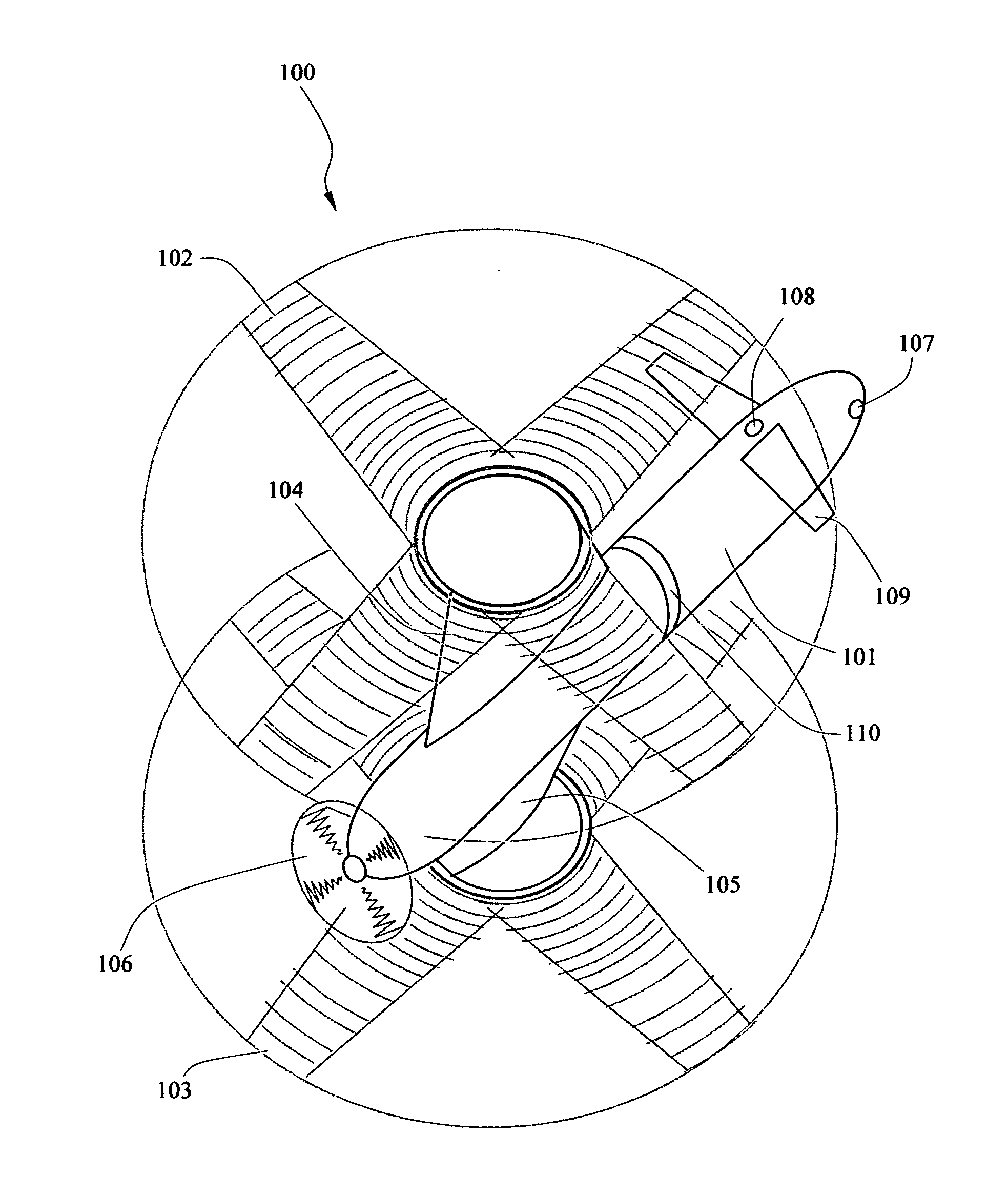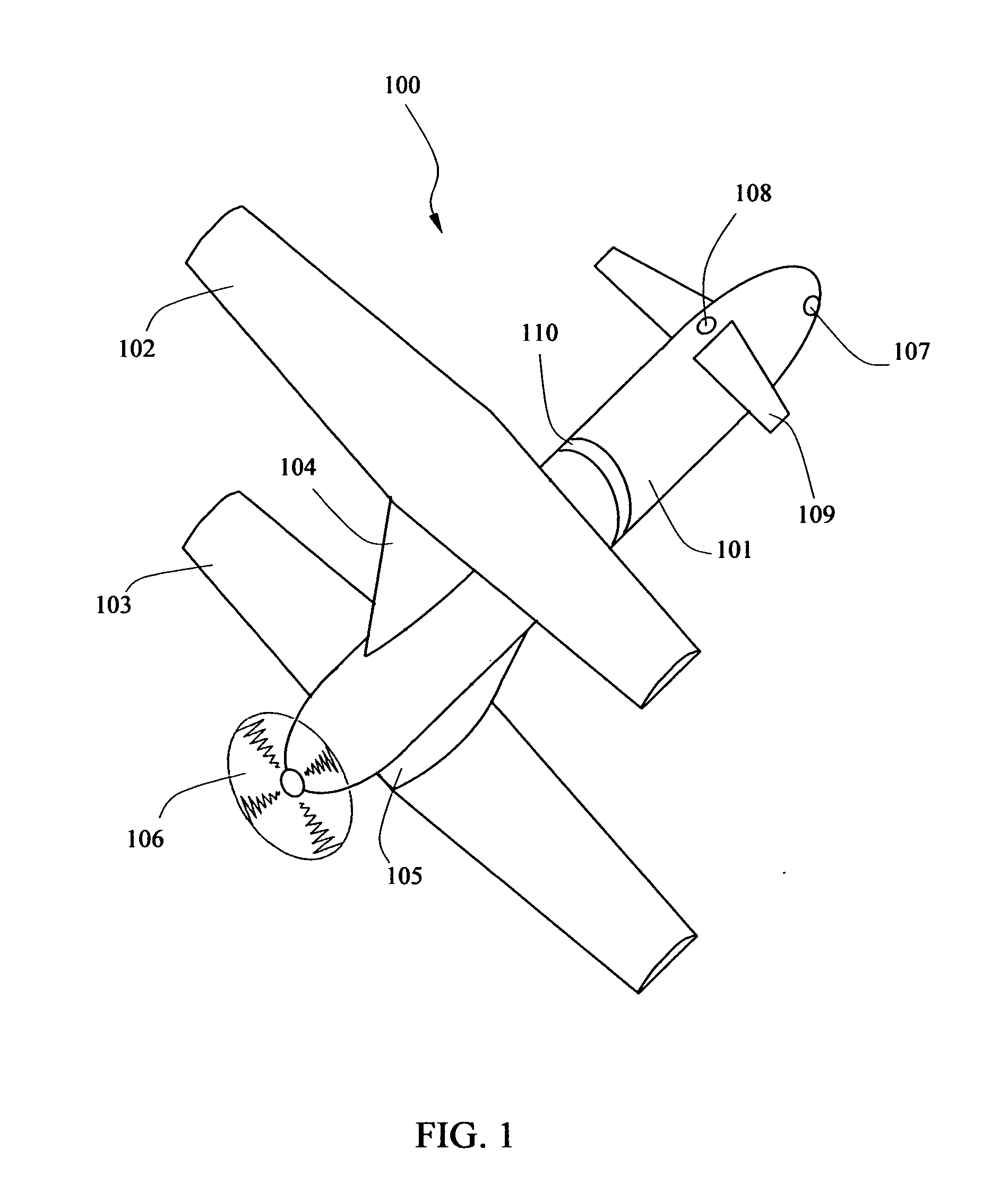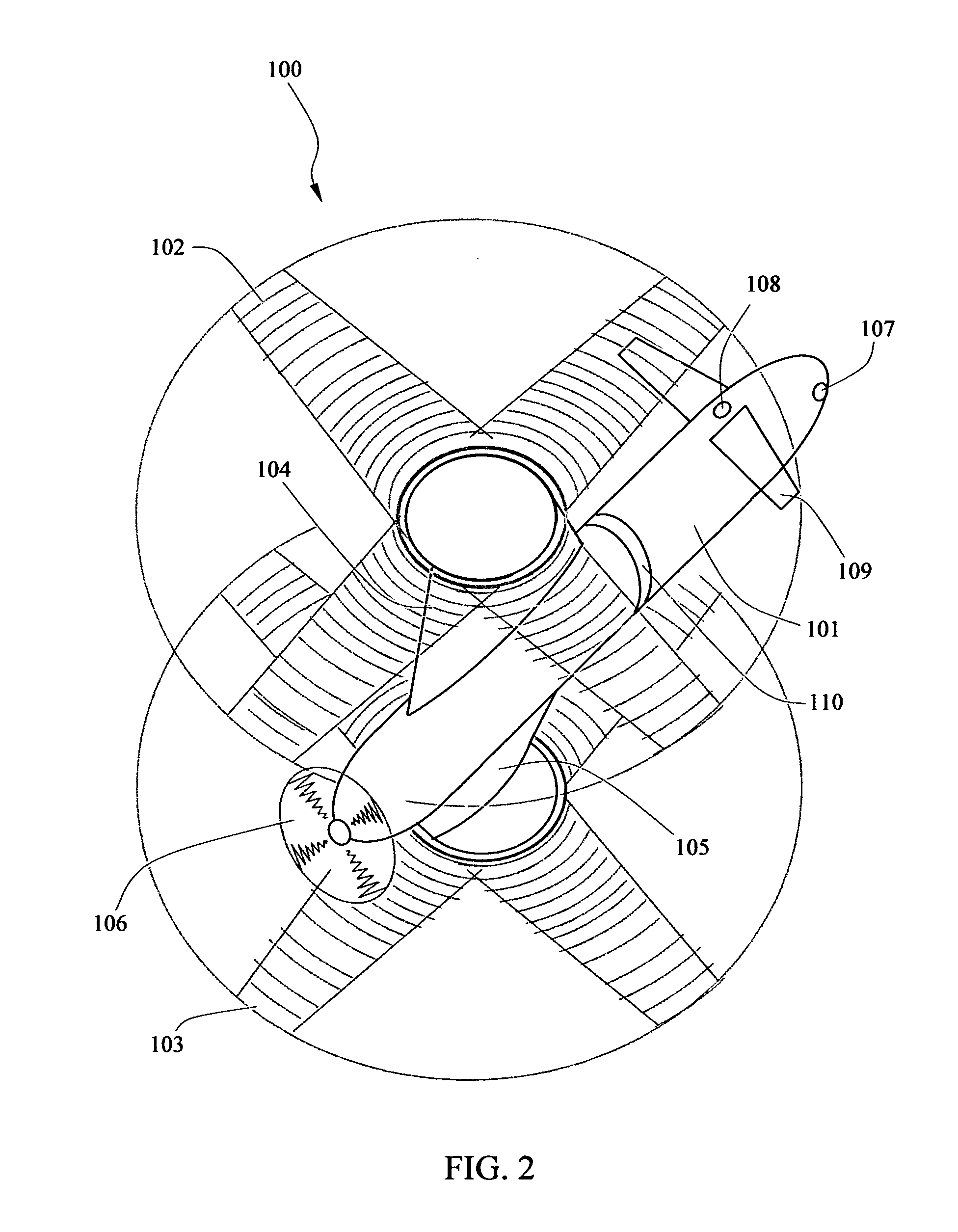Coaxial rotor/wing aircraft
- Summary
- Abstract
- Description
- Claims
- Application Information
AI Technical Summary
Benefits of technology
Problems solved by technology
Method used
Image
Examples
embodiment 202
[0045]For even greater speed, the initial biplane configuration can be modified further during fixed-wing mode. As shown in FIG. 8, the rotor / wings 102 and 103 of the embodiment 202 may be pivoted about their transmission shafts, so that they form two symmetrically opposing oblique wings with a high aspect ratio. This is carried out by the positioning mechanism 20 turning the shaft 22 by a certain define amount. In other embodiments, the aircraft may include feature which independently position the rotor / wings so that one rotor / wing is aligned with the longitudinal axis of the fuselage and the other rotor / wing is maintained transverse to the longitudinal axis or in an oblique orientation to the fuselage to provide lift in a single wing configuration.
embodiment 201
[0046]In some other embodiment the lower or upper or both rotor / wings may be retracted or folded in a variety of ways so as to operate as vertical stabiliser. For example as shown in FIG. 6, sections of the lower-wing 103 are folded downward and used as twin vertical stabilisers. In other embodiments, the lower / wing 103 may be flipped in an inverted V-tail configuration. In yet other embodiment 201 as shown in FIG. 7, the rotor / wing 102 is folded upward in a dihedral configuration and the second rotor / wing 103 is folded downward in an anhedral configuration. This configuration reduces the interference between the two rotor / wings and at the same time operates as vertical stabilisers. As shown in FIG. 4-7, in the embodiments of the aircraft designed for high speed, the masts fairing 104 and 105 are built short so as to provide stronger support for the rotor / wings.
[0047]In the fixed-wing mode, the center of lift of the aircraft 100 is ahead of the axis of rotation of the rotor / wings, a...
PUM
 Login to View More
Login to View More Abstract
Description
Claims
Application Information
 Login to View More
Login to View More - R&D
- Intellectual Property
- Life Sciences
- Materials
- Tech Scout
- Unparalleled Data Quality
- Higher Quality Content
- 60% Fewer Hallucinations
Browse by: Latest US Patents, China's latest patents, Technical Efficacy Thesaurus, Application Domain, Technology Topic, Popular Technical Reports.
© 2025 PatSnap. All rights reserved.Legal|Privacy policy|Modern Slavery Act Transparency Statement|Sitemap|About US| Contact US: help@patsnap.com



